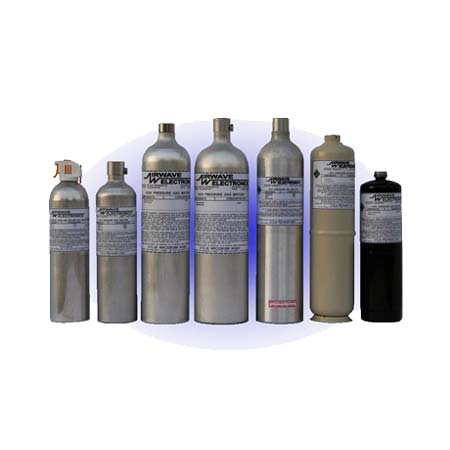H2S Calibration Gas – Hydrogen Sulfide Cal Gas
Home | Calibration Gases | H2S Calibration Gas
H2S Calibration Gas
Unparalleled value with the most competitive pricing and fast delivery for H2S Calibration Gas from Canada. Choose from a range of cylinder sizes, including 17, 34, 58, 76, and 116 liters.

H2S Calibration Gas Cylinder sizes:
- 11 litre Bump aerosol with trigger for bump testing
- 17 litre Non-reactive gases
- 34 litre Reactive/Non-reactive gases
- 58 litre Reactive gases
- 74 litre Reactive gases
- 103 litre Non-reactive gases
Calsmart™ – Refillable Cylinder for Calibration Gases
The Calsmart™ 116-litre refillable cylinder provides an economical and environmentally conscientious alternative to the disposable cylinders of its class. The Calsmart™ delivers twice the volume of gas as do disposable cylinders, and its portability allows it to fit easily into standard carrying cases. These cylinders accommodate both pure and mixed gases to fit a variety of needs. The efficiency and economical benefits of this refillable cylinder will appeal to the “smart” buyer interested in growing their company’s operations.
Disposable Cylinders for Calibration Gases
Airwave Electronics provides disposable cylinders of a full range of calibration gases that are compatible with a wide variety of gas detection equipment. Applications include monitoring industrial workplaces, medical laboratories, industrial hygiene and environmental assessments.
How to Calibrate a H2S gas detector with H2S (Hydrogen Sulfide) Gas.
H2S Calibration Gas is a critical step to ensure the accurate and reliable functioning of your detector. Here is a guide on the correct use of H2S Calibration Gas for calibrating a gas detector:
Safety Precautions:
Before starting the calibration process, ensure that you are in a well-ventilated area or, preferably, perform the calibration outdoors. Wear appropriate personal protective equipment, including gloves and safety glasses. Make sure the gas concentration levels are within permissible exposure limits.
Selecting the Right Gas Concentration:
Choose the appropriate concentration of H2S Calibration Gas based on the specifications of your gas detector and the industry regulations. The selected concentration should be within the detection range of the device. We provide many different concentrations and gas mixtures to work with the majority of Gas Detectors available.
Preparing the Gas Detector:
Follow the manufacturer’s guidelines to prepare the gas detector for calibration. This may involve turning on the device, ensuring it is in calibration mode, and checking for any error messages.
Connecting the Calibration Gas Cylinder:
Connect the H2S Calibration Gas cylinder to the gas detector using the provided tubing and fittings. Ensure a secure and airtight connection to prevent leaks.
Adjusting the Flow Rate:
Adjust the flow rate of the calibration gas to match the specifications outlined in the gas detector’s manual. Proper flow ensures an accurate calibration process.
Initiating Calibration:
Trigger the calibration process on the gas detector. H2S Calibration Gas will be exposed to the sensors to the to establish a measurement.
Observing and Confirming Readings:
During the calibration process, closely monitor the readings on the gas detector. Confirm that the detected concentration matches the known concentration of the calibration gas.
Adjusting Calibration if Necessary:
If there are discrepancies between the detected concentration and the known concentration of the calibration gas, follow the manufacturer’s instructions to adjust the calibration settings on the gas detector until accurate readings are achieved.
Documenting Calibration:
Record the calibration process, including the date, time, concentration of the calibration gas used, and any adjustments made to the gas detector. Proper documentation is crucial for regulatory compliance and audit purposes.
Post-Calibration Checks:
After completing the calibration, perform a functional check of the gas detector using a bump test to ensure it responds appropriately to the presence of H2S. This step helps confirm the overall reliability of the device.
H2S Calibration Conclusion
Regular calibration of gas detectors is essential to maintain their accuracy and reliability in detecting hazardous gases, ensuring a safe working environment. Always follow the manufacturer’s instructions and industry standards when calibrating gas detectors.
